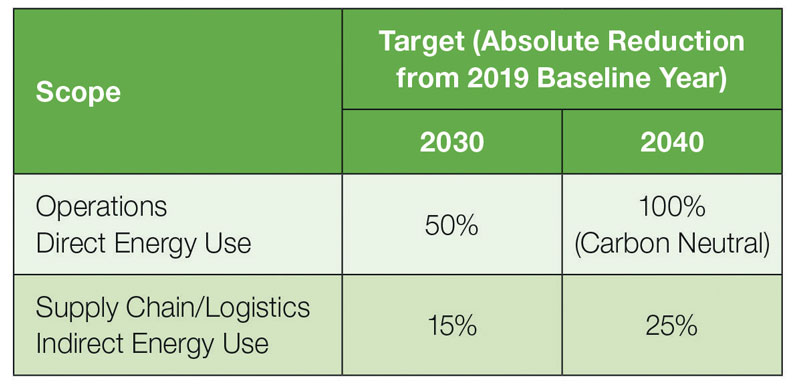Technologies for a sustainable future
By publishing its 2020 Sustainability Report, Parker Hannifin commits to achieving carbon neutral operations by 2040. Parker’s long-term strategy includes actions to reduce its energy consumption, investments in renewable energy and working closely with suppliers to further reduce energy use and emissions.
Motion and control technologies specialist Parker Hannifin Corporation, released its 2020 Sustainability Report and announced a new commitment to achieve carbon neutral operations by 2040. Parker has also established emissions targets to ensure continued progress. Parker’s 2020 Sustainability Report sets Scope I, II and III Emissions Targets. More in the detail: reduction of absolute emissions directly from the company’s operations and indirect emissions from purchased energy (scopes I and II) by 50% by 2030; reduction of other indirect absolute emissions related to materials sourcing, logistics and services (scope III) by 15% by 2030, and 25% by 2040; achievement of carbon neutral operations (scopes I and II) by 2040. Such targets will be submitted for approval by the Science Based Targets initiative, which defines and promotes best practices in emissions reductions and carbon neutral targets in line with climate science.
Parker’s long-term strategy includes actions to reduce its energy consumption, investments in renewable energy and synergy with suppliers to further reduce energy use and emissions.

Efficient products and systems help reduce consumption and emissions
The 2020 Sustainability Report also highlights Parker’s interconnected portfolio of motion and control technologies, which features a broad range of highly efficient products and systems engineered to help customers reduce resource consumption and greenhouse gas emissions.
Parker delivers technology solutions that enable the adoption of cleaner and more efficient energy, electrification, light-weighting and other innovations with a positive, global environmental impact to hundreds of thousands of companies across the industrial, mobile and aerospace markets, including:
– a comprehensive suite of engineered materials such as thermal management, coatings, adhesives, and vibration control that enable more electric applications;
– a broad range of motion and control technologies to support the use of various clean energy sources such as batteries, fuel cells, hydrogen, sustainable fuels and renewable energy;
– strongest motion technology offering with electro-hydraulic, electro-mechanical, and pneumatic actuators, valves, pumps, motors, controllers, software and conveyance for more electric aerospace, mobile and industrial applications;
– broad platform of filtration technologies to accelerate a cleaner and more sustainable world;
– exciting bill-of-material expansion opportunities both for onboard OEM equipment as well as significant new infrastructure investment to support a cleaner technology world.

Sustainability Report key achievements
Other key achievements related to Parker’s sustainability initiatives detailed in the report include: safety (the company has reduced its Recordable Incident Rate by 72% from 2015 through 2020. In 2020, there was a reduction of 35% of recordable incidents compared to 2019; energy intensity (since 2010, Parker has reduced (MWh/USD) by 42% and greenhouse gas intensity (MT/USD) by 50%; recycling (today, Parker recycles more than 85% of waste generated by manufacturing operations and continues to reduce the volume of waste sent to landfills).
Last but not least, the Parker-Hannifin Foundation has donated $64 million since 2010, including $6 million in 2020.

